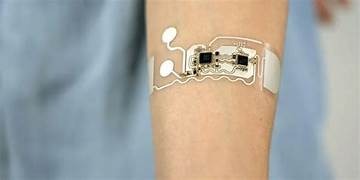
What Makes a Gadget 'Smart' – And Are We Falling for the Label?
"The term 'smart' is everywhere, but do smart gadgets live up to the hype? This article breaks down what makes a gadget 'smart' and whether consumers are being swayed by the label."
✨ Raghav Jain

Introduction: The Rise of 'Smart' Gadgets
The term "smart" has become a buzzword that we associate with almost every new gadget on the market today. From smartphones to smart homes and smart TVs, it seems like anything with an internet connection is now branded as "smart." But what exactly does it mean for a gadget to be called "smart"? Is it just a marketing strategy to sell more products, or is there a true technological advancement behind the label?
In this article, we will explore the meaning of "smart" in the context of gadgets, dissecting how these devices work, the technologies that make them "smart," and whether consumers are really getting what they expect when they purchase these products. We’ll also look at some of the most popular smart devices on the market today and critically examine their functions, exploring whether we’re falling for a clever label or genuinely embracing innovation.
What Makes a Gadget 'Smart'?
Defining 'Smart' Technology
At its core, a smart gadget is typically defined as any device that connects to the internet or a network, enabling it to be controlled remotely or interact with other devices and systems. This ability to collect, process, and respond to data sets it apart from non-smart or traditional devices. Smart gadgets often have sensors, processors, and software that allow them to learn from user behavior, adapt to environments, and perform tasks autonomously.
Key Features of Smart Gadgets
- Connectivity: Smart gadgets are almost always connected to the internet or a home network, enabling remote access and control.
- Automation: Many smart devices offer automated functions, whether it’s adjusting your thermostat based on your schedule or turning off your lights when you leave the room.
- Data Collection & Analysis: Smart devices gather data, which can be used for analysis, optimization, and prediction. For example, fitness trackers monitor your steps, heart rate, and sleep patterns to provide health insights.
- Remote Control: The ability to control a smart device remotely, typically through a mobile app, is one of its most appealing features. This can be as simple as turning on your coffee maker before getting out of bed or adjusting the temperature of your home while on vacation.
The Role of Artificial Intelligence (AI) in Smart Gadgets
One of the key technologies that make many gadgets "smart" today is Artificial Intelligence (AI). AI enables devices to learn, predict, and adapt to user behaviors or environmental factors. For instance, a smart thermostat like the Nest Learning Thermostat doesn't just allow you to control the temperature remotely, it also learns your preferences over time, adjusting the heating or cooling in your home based on your patterns and behaviors.
Another example of AI in action is voice assistants like Amazon Alexa, Google Assistant, and Apple Siri. These AI-powered systems are able to understand spoken commands, learn your preferences, and carry out a range of tasks, such as setting alarms, controlling smart home devices, or playing music. These intelligent interactions have revolutionized how we interact with technology, making devices seem more intuitive and "smart."
Popular Gadgets That Are 'Smart'
Smartphones: The Ultimate Smart Gadget
The most ubiquitous example of a smart gadget is the smartphone. At its most basic, a smartphone is a mobile phone with advanced functionality beyond traditional calling and texting, including access to the internet, camera capabilities, and a variety of apps. However, what makes smartphones truly "smart" is the combination of hardware and software that allows them to integrate with a vast ecosystem of apps and services. Whether it’s using AI to enhance photos, providing real-time traffic updates via Google Maps, or running smart home apps to control everything from lighting to security, smartphones are the centerpiece of the modern smart gadget ecosystem.
Smart Homes: The New Era of Home Automation
Another area where smart technology has made a significant impact is the smart home. This encompasses a wide range of devices designed to automate and optimize your living space. Smart thermostats like the Nest Thermostat can learn your temperature preferences and adjust accordingly. Smart speakers like Amazon Echo and Google Nest Audio allow users to interact with their home’s technology using just their voice. Additionally, smart lights like those from Philips Hue or LIFX can be controlled via smartphone apps or voice commands, adjusting brightness and even color to suit the user’s preferences.
The smart home concept takes things further with smart security systems, such as Ring doorbells and Nest cameras, which allow homeowners to monitor their property remotely and receive alerts when unusual activity is detected. Smart locks and smart garage door openers provide added convenience, allowing homeowners to unlock doors and garages remotely or on a schedule.
Wearable Technology: Smarter Health and Fitness
Another booming category of smart gadgets is wearables, with the Apple Watch, Fitbit, and Oura Ring leading the charge. These devices monitor physical activity, heart rate, sleep patterns, and other health metrics, providing valuable insights into overall well-being. Wearables often integrate with smartphones or other smart devices, allowing users to track their health data and receive alerts or feedback in real time.
In addition to fitness tracking, some wearables include smart features like messaging, notifications, and even mobile payment integration, making them more versatile and appealing to a wider range of users.
Are We Falling for the 'Smart' Label?
The Marketing Power of 'Smart'
The term "smart" has become synonymous with innovation and convenience, making it an appealing selling point for manufacturers. But are all gadgets that claim to be "smart" genuinely more advanced than their non-smart counterparts? The reality is that the label is often used as a marketing tool, applied to products that may not live up to consumer expectations.
For example, a smart toaster may only offer basic features like the ability to control browning via an app or preset timers, but these features don’t necessarily improve the function of the toaster. In some cases, the added smart features may be more about novelty and convenience than actual utility, leaving consumers questioning whether they’re truly getting value for their money.
Functionality vs. Hype: Is 'Smart' Always Better?
One of the biggest criticisms of the "smart" trend is that not all smart gadgets are actually useful. Take smart fridges, for example: many models boast features like touchscreens, cameras, and internet connectivity, allowing users to track inventory or create shopping lists remotely. However, while these features might sound great, they often come with hefty price tags and questionable long-term utility. For most people, a traditional fridge with a good organizational system may be just as effective as a high-tech, "smart" fridge.
Another example is the smart fridge’s ability to show the contents of your fridge remotely. While this may seem like a game-changing feature, it can sometimes be less practical than anticipated. A quick glance through the fridge’s camera on your phone might not always provide a detailed view of what’s inside, and syncing issues or high-tech malfunctions can make it more of a hassle than a help.
The Risk of Overcomplicating Simplicity
Some consumers are questioning whether the shift to "smart" gadgets is simply a case of overcomplicating what were once simple tasks. For example, smart lightbulbs and smart plugs add layers of complexity to actions as simple as turning on a light or charging a device. While the added features might be appealing to some, they may make basic actions unnecessarily complicated for others, particularly older individuals or those not as tech-savvy.
In addition, some smart gadgets require a consistent internet connection to function properly. When the network goes down, so does the functionality of your devices. For those who live in areas with unreliable internet access, this dependency can be a significant drawback.
Are We Becoming Too Dependent on Smart Gadgets?
The Convenience vs. Dependency Dilemma
While the convenience of smart gadgets is undeniable, there are growing concerns about our increasing dependence on these devices. As more of our daily lives become integrated with technology—whether it’s controlling our homes, monitoring our health, or managing our finances—we risk becoming overly reliant on gadgets that might malfunction, become obsolete, or be hacked. For instance, if your smart lock fails or is hacked, it could leave your home vulnerable to break-ins. Similarly, if a smart assistant stops functioning or has trouble understanding your commands, it could disrupt your daily routine.
There’s also the risk of over-automation, where we might start to rely on smart gadgets to handle tasks that we once did manually. Smart refrigerators, self-driving cars, and automated home assistants could, in some ways, reduce our engagement with the world around us. If we’re no longer actively making decisions or thinking critically about simple tasks, we may lose certain skills or the ability to engage in tasks that once required our focus.
Moreover, while many of us enjoy the convenience of smart gadgets, there’s a growing concern about privacy and security. With more data being collected by smart devices, the question arises as to how well that data is being protected and used. Smart speakers like Amazon Echo and Google Nest Audio have been known to record conversations or inadvertently capture sensitive information. Smart cameras and other surveillance devices raise concerns about data security, especially when it comes to sharing private footage or personal data with third parties.
The Environmental Impact of Smart Gadgets
As we adopt more smart gadgets into our daily lives, it's important to consider the environmental impact of these devices. While they may help reduce energy consumption or optimize efficiency, the production and disposal of smart devices have significant environmental costs. For example, the production of smartphones and smart TVs requires raw materials such as rare earth metals, which are often mined in environmentally harmful ways. Moreover, the rapid pace at which new models are released encourages a throwaway culture, where older gadgets are discarded rather than recycled.
The energy consumption of smart devices is another issue to consider. While individual devices like smart thermostats can help reduce heating and cooling costs, many smart gadgets require constant connectivity to the internet, which means they are always drawing power, even when not in use. As more people adopt smart gadgets, the cumulative energy consumption could increase, contributing to a greater carbon footprint.
Manufacturers are beginning to recognize these issues, and some are working toward more sustainable practices. For example, companies like Apple have committed to using recycled materials in their products, and some smart home brands are focusing on energy-efficient solutions to minimize the environmental impact of their devices.
Smart Gadgets and the Future: What's Next?
The Integration of Augmented Reality (AR) and Virtual Reality (VR)
The next frontier for smart gadgets is the integration of augmented reality (AR) and virtual reality (VR) technologies. These immersive technologies are set to transform how we interact with our gadgets and our surroundings. AR and VR could revolutionize fields such as healthcare, education, entertainment, and e-commerce.
For example, in healthcare, doctors could use AR glasses to access patient information in real-time, overlaying vital statistics or imaging data on a patient's body while performing surgery. In education, students could use AR to interact with 3D models of historical events or scientific phenomena. In the world of e-commerce, AR could allow users to virtually try on clothes or preview furniture in their homes before making a purchase.
Smart gadgets equipped with AR and VR could also enhance entertainment experiences. Imagine wearing a smart headset that not only immerses you in a game but also allows you to interact with the environment in ways that were previously impossible. VR gaming systems like Oculus Rift have already shown the potential of this technology, and as it evolves, we’ll likely see even more innovative applications in the future.
The Age of Smart Everything
Looking toward the future, the line between smart and traditional devices will continue to blur. Smart cities, for instance, will integrate intelligent systems into every aspect of urban living, from transportation to energy management. Smart vehicles could communicate with smart traffic systems to optimize routes, while smart infrastructures could monitor and maintain the health of roads, bridges, and public spaces.
In the coming decades, we may witness an era where virtually everything is "smart"—from smart clothing that can adjust to temperature fluctuations to smart kitchens where appliances communicate with each other to create the perfect cooking environment. The possibilities are endless, and the convergence of AI, IoT (Internet of Things), and 5G networks will play a significant role in this ongoing transformation.
Conclusion
As we’ve seen, the concept of “smart” gadgets is not just a marketing term; it represents a shift in how we interact with technology. The rise of these connected, intelligent devices has revolutionized many aspects of our daily lives, from how we communicate with each other to how we manage our homes and health. However, as the number of smart devices continues to grow, we must carefully consider the true value these gadgets provide beyond the label.
Smart gadgets should be assessed not just on their ability to connect to the internet or offer remote control but on how they truly enhance our lives, improve convenience, and offer real-world benefits. The power of AI, machine learning, and data analytics embedded in many devices is undeniably impressive, but it also raises concerns about privacy, security, and the risk of over-dependence. As consumers, we need to be aware of the marketing hype and ensure that the features promised by “smart” gadgets actually deliver meaningful and useful functionality.
Moreover, the future of smart technology holds tremendous potential, with advancements in 5G, AI, and AR/VR technologies set to push the boundaries even further. However, it's essential to stay informed and discerning as we continue embracing this technology, to ensure we are not just being swept away by a trend but are making choices that genuinely benefit our daily lives and the environment.
The journey of smart technology is just beginning, and while the term “smart” may be overused, there’s no doubt that these gadgets have changed the way we live and will continue to shape the future in remarkable ways.
Q&A
Q1: What is the primary feature that makes a gadget 'smart'?
A1: The primary feature that makes a gadget "smart" is its ability to connect to the internet or a network, allowing it to be controlled remotely or interact with other devices or systems.
Q2: Can smart gadgets truly improve daily life, or are they just a novelty?
A2: Many smart gadgets offer genuine improvements in convenience and efficiency, such as smart thermostats that save energy or wearable devices that monitor health. However, some devices may be more novelty than necessity.
Q3: Is the term 'smart' overused in marketing?
A3: Yes, the term 'smart' is often overused, with products labeled as "smart" simply for having basic connectivity or app control. This can sometimes mislead consumers into believing the device offers more advanced features than it does.
Q4: How does AI contribute to making gadgets 'smart'?
A4: AI enables gadgets to learn from user behavior, predict needs, and adapt to changing conditions. For example, smart thermostats can adjust the temperature based on your daily routine, and voice assistants learn your preferences over time.
Q5: Are all smart gadgets vulnerable to hacking?
A5: While many smart gadgets are secure, they can be vulnerable to hacking if not properly protected. Devices with internet connectivity can be targets for cyberattacks, which is why it's important to ensure devices have strong security measures.
Q6: How can smart gadgets enhance energy efficiency in the home?
A6: Smart gadgets like thermostats, lights, and appliances can adjust usage based on occupancy or time of day, reducing energy consumption and helping homeowners lower their utility bills while reducing environmental impact.
Q7: What’s the difference between a ‘smart home’ and a ‘regular home’?
A7: A smart home uses connected devices that can be controlled remotely or programmed for automation. This includes smart lights, thermostats, security cameras, and more, offering enhanced convenience, security, and energy efficiency compared to traditional homes.
Q8: Do smart devices consume a lot of energy?
A8: While individual smart devices may use more energy than their traditional counterparts, the overall energy consumption can be reduced when devices are optimized for efficiency, such as smart thermostats that adjust heating or cooling based on your schedule.
Q9: What are the privacy risks associated with smart gadgets?
A9: Many smart devices collect personal data, such as location, health metrics, or daily routines, raising concerns about data privacy. Poor security or breaches could expose sensitive information, making it crucial for manufacturers to ensure robust protection.
Q10: Are smart gadgets worth the price?
A10: Whether smart gadgets are worth the price depends on the value they provide to the user. If the device enhances convenience, efficiency, or security in meaningful ways, it can be a worthwhile investment. However, for some, non-smart alternatives may suffice.
Similar Articles
Find more relatable content in similar Articles

Smart Cities: How Technology I..
Smart cities are transforming .. Read More

Wearable Health Sensors: The D..
Wearable health sensors are re.. Read More

AI in Drug Discovery: Faster C..
Artificial Intelligence is rev.. Read More

Solar-Powered Wearables: Can T..
Solar-powered wearables are re.. Read More
Explore Other Categories
Explore many different categories of articles ranging from Gadgets to Security
Smart Devices, Gear & Innovations
Discover in-depth reviews, hands-on experiences, and expert insights on the newest gadgets—from smartphones to smartwatches, headphones, wearables, and everything in between. Stay ahead with the latest in tech gear
Apps That Power Your World
Explore essential mobile and desktop applications across all platforms. From productivity boosters to creative tools, we cover updates, recommendations, and how-tos to make your digital life easier and more efficient.
Tomorrow's Technology, Today's Insights
Dive into the world of emerging technologies, AI breakthroughs, space tech, robotics, and innovations shaping the future. Stay informed on what's next in the evolution of science and technology.
Protecting You in a Digital Age
Learn how to secure your data, protect your privacy, and understand the latest in online threats. We break down complex cybersecurity topics into practical advice for everyday users and professionals alike.
© 2025 Copyrights by rTechnology. All Rights Reserved.